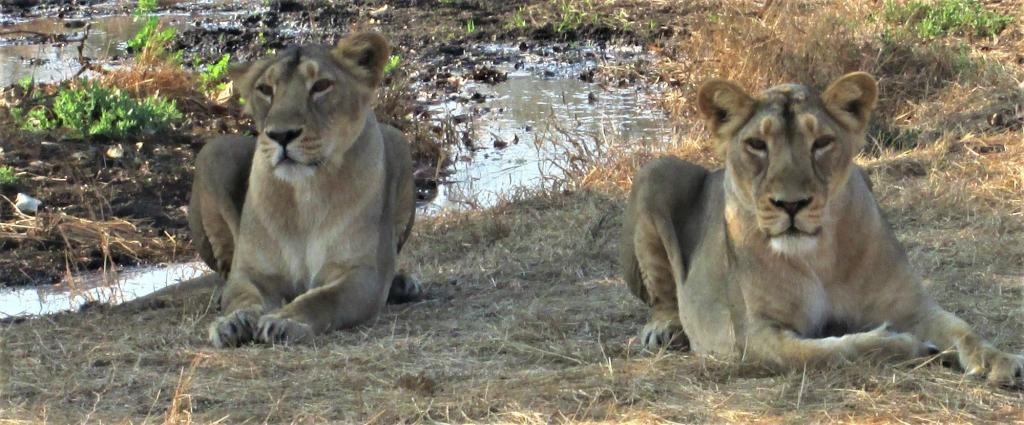As reported by the Gujarat Forest Department, in the man-animal conflict 12 people lost their lives and 70 were injured also, 3927 cattle were killed and injured in the Junagarh Wildlife Circle, which includes the Gir lion Sanctuary.
There has been an increase in attacks on humans and domestic livestock as the population of Asiatic lions in Gir National Sanctuary and its surrounding areas has increased.
Brief About Gir National Park
Sprawling over 1412 sq. km, of which 258 sq. km is the core national park. During the year 1913, there were 20 lions and the number has grown to 750 in 2022. The Lions are now seen in Barda, Mitiyala, and Pania Sanctuary also, in the coastal belt of Amreli and Bhavnagar, and the far regions of the Chotila in the Surendranagar district.
As the Lions were moving out of the sanctuary in search of food, in the 1990s, the government decided to move out pastoralists and Maldhari living in the sanctuary areas for decades because of which the lions lost their domestic prey like cows, and buffalos, and became totally dependent on wild prey as said by the environmentalist.
The Rajya Sabha member inquired about the wild prey population in Gir Sanctuary as the increasing population of the Asiatic Lions and the lions roaming in the revenue areas, attacking humans and domestic animals.
Have a Quick Look on Recent Happenings
As per the Forest department statistics, there were 1,49,365 wild prey in 2018 whereas, in 2019, they were 1,55,659. This includes sambar, spotted deer, wild pig, blue-bull gazelle, four-horned antelope, Hanuman Langur, black buck, and Indian Peafowl in Gir Sanctuary.
What matters is whether there is enough wild prey and what can be done to avoid the lions entering the revenue areas.A PIL was moved before the Gujarat high court stating that with an increase in the number of lions, a long-term wildlife policy is required for better conservation methods. Also, there was a feeling villagers to take back the sanctuary areas so, they co-exist with the tigers as they used to do in the early 1990s.
Why Man-Animal Conflict Happens in Jungles
The Rise in the man-animal conflict can be due to two reasons- There has been an increase in human interference in buffer and eco-sensitive zones, and wild animals searching for isolation and food must find alternative habitats. The Second reason could be, an activist, observed that people in revenue areas aren't familiar with co-existence with lions as far back as the Gir tribes.
What Experts have to Say
The Activists have studied co-existence for years. Till the mid-1990s, the tribes were okay living with the animals and respect their presence. Even if the cattles were attacked by the lions the tribals never confronted the lion. Since tourism has increased in the forest during 2020-21, 1,09,400 tourists visited the Gir National Park and 2315 visited the Girnar Wildlife Sanctuary. Due to the increased activities in the buffer and the eco-sensitive zones with the resorts, wildlife has lost its tranquility and hence, the animals are moving out and attacking humans.

